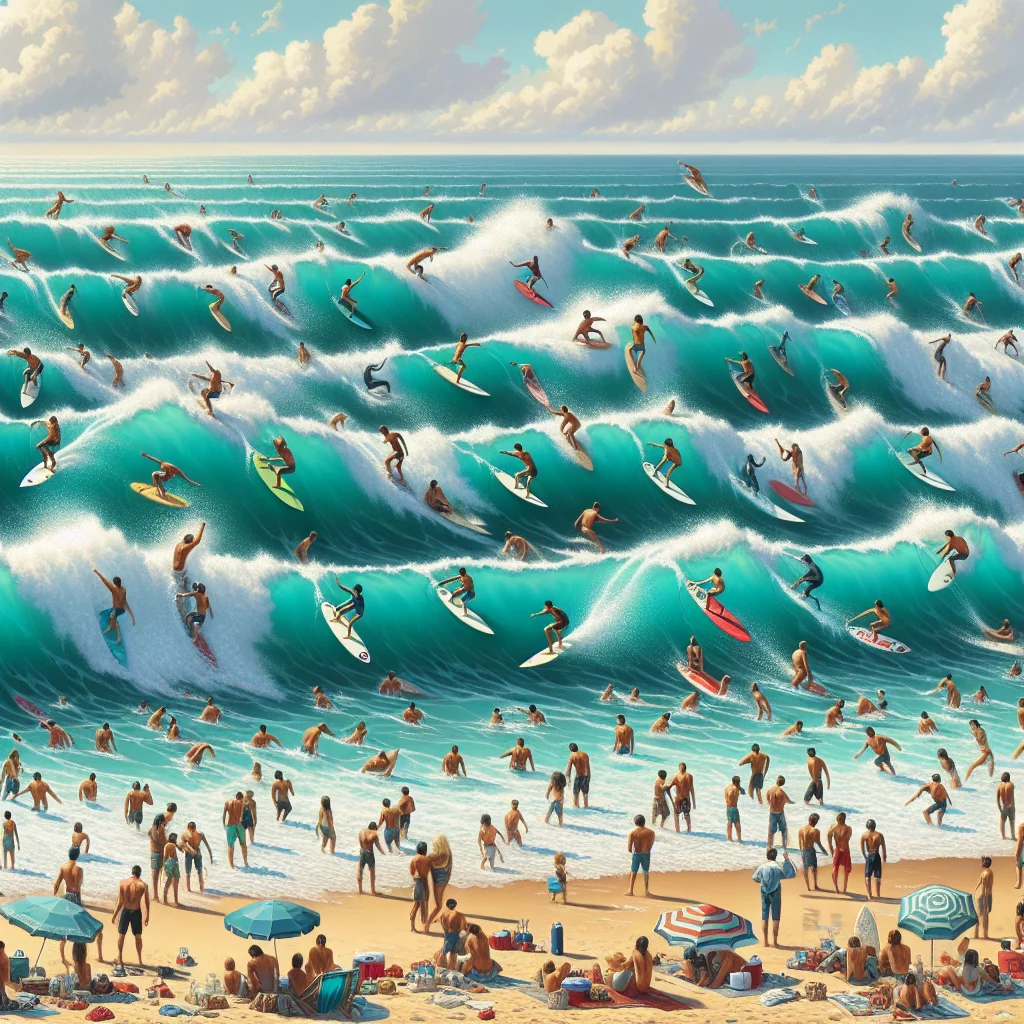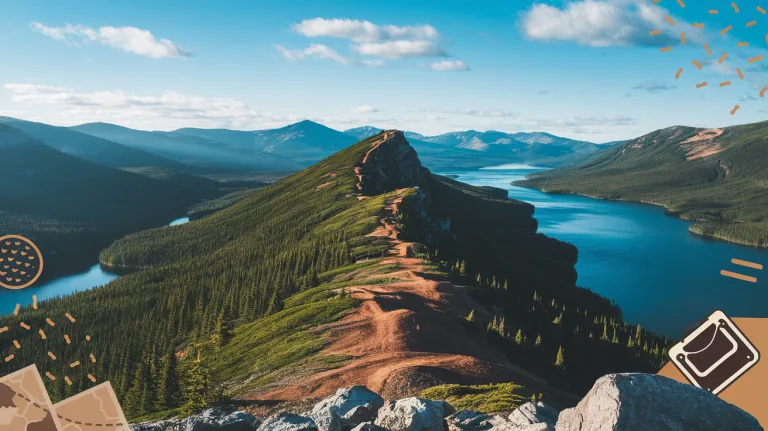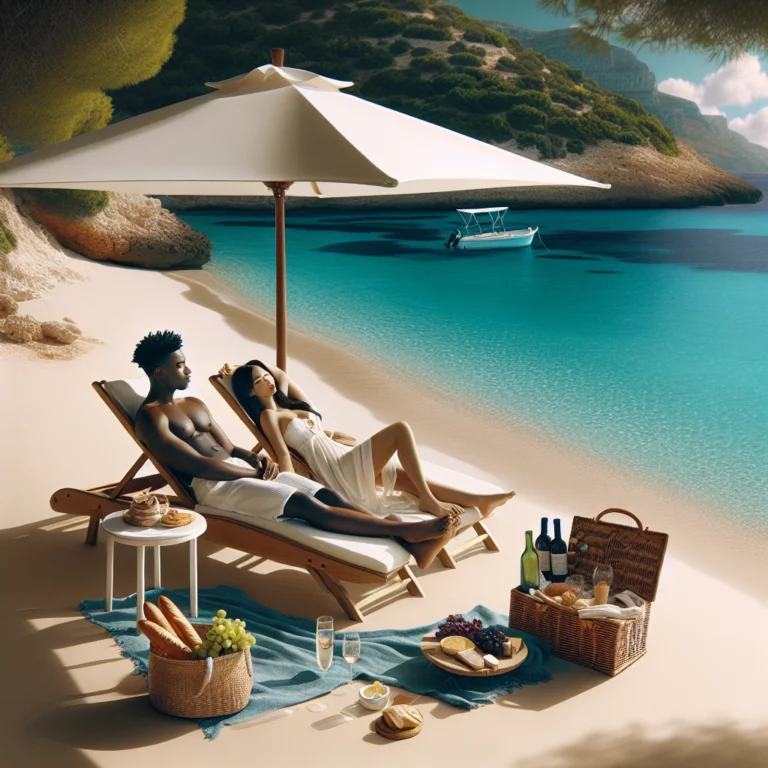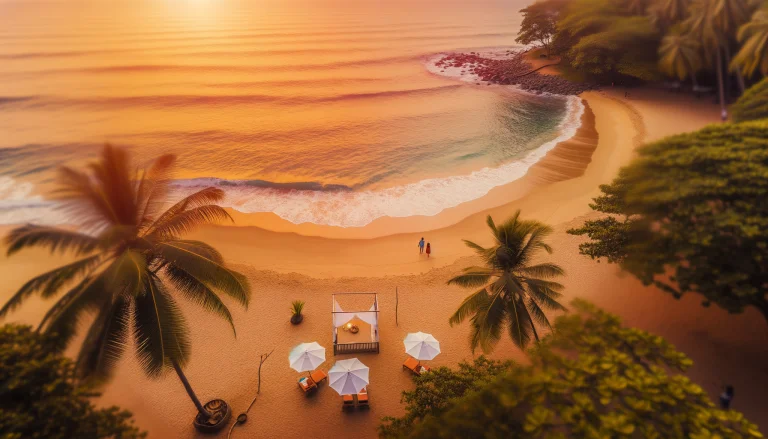Best Beaches For Surfing Enthusiasts: Ride The Waves
Looking for the best beaches to ride the waves? Look no further! Best Travel Dealz has got you covered. Whether you’re a seasoned surfer or a newbie looking to catch your first wave, we’ve gathered a list of the top beaches around the world that will satisfy all your surfing needs. From the famous breaks of Hawaii’s North Shore to the picturesque coastlines of Australia, get ready to ride the waves in style. So grab your board, wax it up, and let’s dive into the thrilling world of surfing!
Understanding the Essentials of Surfing Beaches
Surfing is not just a sport; it’s a way of life. And if you’re a surfing enthusiast, then finding the perfect beach with the right waves is essential. In this article, we will explore the ingredients that make a beach perfect for surfing, help you identify the ideal season for surfing, and provide tips for assessing safety conditions. So grab your board and get ready to ride the waves!
Exploring the ingredients for a perfect surfing beach
A perfect surfing beach is like a hidden gem, waiting to be discovered. There are several factors that contribute to the greatness of a surfing spot. Firstly, the beach should have consistent waves. You don’t want to travel all the way to a beach only to find flat waters. The best surfing beaches have waves that break consistently and provide plenty of opportunities for riding.
Secondly, the shape of the beach and the seafloor play a crucial role. Beaches with a gradual slope and a sandy bottom create the ideal conditions for forming quality waves. The waves break smoothly and are perfect for beginners and experts alike.
Lastly, offshore winds are essential for creating great waves. These winds blow from the land towards the sea and help to shape the waves, making them clean and organized. Beaches with consistent offshore winds are a surfer’s paradise.
Identifying the ideal season for surfing
Each surfing destination has its own unique surf season, depending on factors such as weather patterns, swell direction, and water temperature. Understanding the ideal season for surfing is crucial to ensure you catch the best waves.
For example, the North Shore of Oahu, Hawaii, is known for its big wave surfing during the winter months, specifically between November and February. During this time, massive swells from the Pacific Ocean produce waves that can reach up to 30 feet, attracting professional surfers from around the world.
On the other hand, Supertubes in Jeffrey’s Bay, South Africa, offers epic waves during the winter months of June to August. The Southern Hemisphere’s winter brings consistent swells that create perfectly shaped barrels, making it a dream destination for experienced surfers.
It’s important to research and understand the specific surf seasons of your chosen destination to make the most of your surfing adventure.
Assessing Safety Conditions
Before heading out to catch those waves, it’s vital to assess the safety conditions of the beach you plan to surf at. Surfing can be a thrilling and adrenaline-pumping activity, but safety should always be a priority.
Firstly, knowledge of the beach’s surf break is essential. Different breaks have different characteristics, and knowing how to approach them is crucial for your safety. Understanding whether it’s a beach break, reef break, or point break will help you navigate the waves more effectively.
Checking the weather and swell forecast is also important. Stormy weather can create hazardous conditions, and large swells can be overwhelming for inexperienced surfers. Monitoring the conditions and ensuring they are suitable for your skill level is essential.
Additionally, knowing the ocean’s currents and rip currents is crucial. Pay attention to warning signs and flags indicating potential dangers. If you find yourself caught in a rip current, swimming parallel to the shore can often help you escape its pull.
Lastly, always surf with a buddy. Having someone with you increases safety and provides assistance in case of an emergency. Remember, the ocean can be unpredictable, so it’s better to err on the side of caution.
North Shore, Oahu, Hawaii
Overview of North Shore
When it comes to surfing destinations, the North Shore of Oahu, Hawaii, is an absolute mecca for wave riders. Known for its massive swells and iconic breaks, this stretch of coastline attracts surfers from around the world. The North Shore is home to world-famous breaks like Pipeline, Sunset Beach, and Waimea Bay, offering a paradise for both professional and aspiring surfers.
Highlighting the best spots for surfing
The North Shore boasts a variety of surf spots, each with its own unique characteristics and challenges. Pipeline is undoubtedly the most famous and daunting break, known for its powerful and hollow waves that can reach up to 20 feet. It takes skill and bravery to conquer Pipeline, making it a favorite among professional surfers and spectators alike.
If you’re seeking a more mellow surfing experience, Sunset Beach is a great option. The waves here are more forgiving, which makes it suitable for all skill levels. However, during the winter months, Sunset Beach can still produce sizable waves, so be prepared for some excitement.
Another iconic spot is Waimea Bay, best known for its massive waves that can reach up to 30 feet. Conditions have to be just right for Waimea Bay to come alive, so catching it on a perfect day is a surfer’s dream.
Tips for visiting
Visiting the North Shore for a surfing adventure requires preparation and respect for the local culture. Here are a few tips to make the most of your trip:
- Be aware of the local surf etiquette. Respect the locals and be mindful of their knowledge and experience.
- Stay humble and observe the conditions before entering the water. The reefs around the North Shore can be hazardous, so understanding the breaks and currents is crucial for your safety.
- Allow yourself time to acclimatize to the power of the waves. The North Shore is known for its challenging conditions, so take it easy and progress at your own pace.
- Enjoy the vibrant surf culture. Explore the local surf shops, watch professional surf competitions, and immerse yourself in the laid-back atmosphere that defines the North Shore.
Supertubes, Jeffrey’s Bay, South Africa
Introduction to Supertubes
Located in Jeffrey’s Bay, South Africa, Supertubes is a world-class surfing destination renowned for its consistently perfect waves. The name “Supertubes” speaks for itself, as this spot offers clean, powerful, and hollow waves that are a dream for experienced surfers looking for adrenaline-fueled rides.
Discussing the uniqueness of its waves
What sets Supertubes apart from other surf spots is its unique wave formation. When the swells of the Southern Ocean hit the reefs and sandbars off Jeffreys Bay, they refract, creating perfectly cylindrical barrels. These flawless waves draw surfers from all corners of the globe, making Supertubes a must-visit destination for those seeking an unforgettable surf experience.
Best time to visit Supertubes
The ideal time to visit Supertubes is during the winter months of June to August, when South Africa’s Southern Hemisphere is in full swing. During this time, swells generated by storms in the Atlantic Ocean deliver consistent waves to Supertubes, producing the best surfing conditions.
However, even during the off-peak seasons, Supertubes can still offer excellent waves. With its consistent swell patterns and favorable winds, this surf spot has something to offer surfers year-round.
Bells Beach, Victoria, Australia
Describing Bells Beach
Bells Beach, located in Victoria, Australia, is an iconic surf destination with a rich history in the world of professional surfing. This picturesque beach offers breathtaking views, rugged coastal cliffs, and an incredible surf break that has attracted surfers for decades. Bells Beach is known for its raw beauty and the incredible waves that make it a surfer’s paradise.
Characteristics of waves at Bells Beach
The waves at Bells Beach are renowned for their power and size. With a granite reef break, the swells that roll into Bells Beach create large, powerful waves that are suited for experienced surfers. The waves often barrel, providing an exhilarating ride opportunity for those with the skills to handle it.
Bells Beach is famous for hosting the Rip Curl Pro, one of the most prestigious events on the professional surfing circuit. It’s a testament to the quality and challenge of the waves at Bells Beach.
Visiting and Surfing Guidelines
When visiting Bells Beach, it’s important to respect the beach and the surf community. Here are a few guidelines to keep in mind:
- Be aware of the local surf etiquette. Bells Beach has a tight-knit surfing community, and respecting the locals will go a long way in making your experience enjoyable.
- Pay attention to the conditions and be cautious. The waves at Bells Beach can be powerful and challenging, so ensure you have the necessary skills and experience to handle them.
- Take the time to explore the surrounding area. Bells Beach is situated on the Great Ocean Road, which offers stunning views and other attractions like the Twelve Apostles. Take advantage of the opportunity to immerse yourself in the natural beauty of the region.
Puerto Escondido, Oaxaca, Mexico
Getting to know Puerto Escondido
Located in the state of Oaxaca, Mexico, Puerto Escondido is a hidden gem for surfers seeking powerful and challenging waves. Translated as “Hidden Port,” Puerto Escondido lives up to its name, offering a relatively undiscovered surfing destination with incredible potential.
Why surf Puerto Escondido?
Puerto Escondido is home to the beach break known as the Mexican Pipeline or Zicatela. This legendary wave is one of the most powerful and demanding breaks in the world, attracting experienced surfers who enjoy pushing their limits. From hollow barrels to fast and powerful walls, Puerto Escondido delivers an adrenaline rush that is hard to find elsewhere.
Beyond the Mexican Pipeline, Puerto Escondido offers a range of other surf breaks suitable for different skill levels. From the beginner-friendly breaks near Playa Carrizalillo to the challenging reef breaks at La Punta, there is something for everyone in Puerto Escondido.
Insider’s guide to surfing in Puerto Escondido
If you’re planning a surf trip to Puerto Escondido, here are a few insider tips to enhance your experience:
- Equip yourself with the right board. Due to the powerful waves, a well-rounded shortboard or a step-up board is recommended for most surfers. Consult with local surf shops or experienced surfers to help you choose the right equipment.
- Be mindful of the crowd and respect the local surfers. Puerto Escondido can get crowded, especially when conditions are prime. Maintain proper surf etiquette and wait for your turn to catch a wave.
- Take advantage of the boating service available. If you want to surf the Mexican Pipeline but feel intimidated by the paddle-out, consider hiring a boat to drop you off in the lineup. This way, you can maximize your time riding the waves and avoid fatigue from battling the strong currents.
- Embrace the vibrant surf culture. Puerto Escondido has a lively surf scene with plenty of beachside bars, restaurants, and surf shops. Immerse yourself in the local culture and connect with fellow surfers who share your passion.
Uluwatu and Kuta, Bali, Indonesia
Introducing Uluwatu and Kuta
Bali, Indonesia, is a dream destination for surfers from around the world, and within Bali, Uluwatu and Kuta stand out as iconic surfing spots. These two locations offer a unique blend of beautiful beaches, vibrant culture, and world-class waves.
Uluwatu is known for its stunning cliffside views and long, powerful left-hand reef breaks. This legendary surf spot delivers consistent waves that attract experienced surfers looking for a challenge. In contrast, Kuta Beach offers a more beginner-friendly experience, with mellow waves and a lively atmosphere.
Experience the Bali Waves
riding the waves in Bali is an experience like no other. The warm tropical waters combined with consistent swells make it a surfer’s paradise. Uluwatu and Kuta offer different surfing experiences, catering to both advanced and beginner surfers.
At Uluwatu, be prepared for fast and hollow waves that break over a shallow reef. The powerful left-hand break requires skill and experience, so it’s best suited for intermediate to advanced surfers. However, even if you’re a beginner, Uluwatu is worth a visit to witness the awe-inspiring beauty of the waves and enjoy the vibrant surf culture that surrounds it.
Kuta Beach, on the other hand, is a more forgiving and relaxed surf spot, ideal for beginners. The forgiving waves make it a great place to learn to surf or improve your skills. Take advantage of the surf schools and board rentals available, and enjoy the laid-back atmosphere that permeates Kuta Beach.
Surfing Advice and Recommendations
When planning your surfing adventure in Bali, consider the following advice:
- Respect the local customs and traditions. Bali is deeply rooted in its unique Hindu culture, and it’s important to be mindful and respectful of its traditions and ceremonies.
- Stay hydrated and protected from the sun. The tropical climate can be intense, so always drink plenty of water and wear sunscreen to avoid getting sunburned.
- Check the surf forecast and choose your surf spot accordingly. Bali offers a variety of breaks and surf spots, each with different conditions and suitability for different skill levels. Research the best spots for your level of experience and the prevailing swell and wind conditions.
- Embrace the vibrant nightlife. Bali offers a lively nightlife scene, and Uluwatu and Kuta have a range of bars and restaurants where you can relax and unwind after a day of surfing.
Teahupo’o, Tahiti, French Polynesia
Discovering Teahupo’o
Teahupo’o, located in Tahiti, French Polynesia, is world-famous for its monstrous waves and incredible surf breaks. This legendary surf spot is known for producing some of the largest and most powerful waves on the planet, attracting thrill-seeking surfers from all corners of the globe.
Understanding its unique breaks
What sets Teahupo’o apart from other surf spots is its heavy and shallow reef break, which creates waves that reach jaw-dropping heights. The wave here is so intense that it breaks in an extremely shallow section of the reef, resulting in a powerful and hollow tube ride.
Teahupo’o is not for the faint of heart. The waves can reach heights of up to 25 feet, and the reef below poses a serious risk if you’re not experienced in surfing heavy breaks. The name “Teahupo’o” translates to “place of skulls” in Tahitian, highlighting the danger and risks associated with this world-renowned spot.
Safety Precautions to take while surfing
Due to the extreme nature of Teahupo’o, surfing here requires extensive preparation and caution. Here are some safety precautions to keep in mind:
- Assess the conditions and your abilities. Only experienced surfers should attempt to ride Teahupo’o. The power and size of the waves demand advanced skills and experience.
- Study the wave and the reef. Understanding the breaks and potential hazards is crucial for your safety. Consider enlisting the help of local guides or experienced surfers who are familiar with Teahupo’o’s unique characteristics.
- Protect yourself with proper equipment. Due to the shallow reef, it’s essential to wear a quality wetsuit and be equipped with a solid board that can withstand the powerful waves and potential reef impact.
- Respect the locals and the local culture. Teahupo’o is deeply embedded in the Tahitian culture, and it’s important to approach the spot with respect and humility. Follow any local guidelines and respect the local surfers’ expertise.
Trestles, Orange County, California
About Trestles
Trestles, located in Orange County, California, is one of the most beloved and iconic surf spots in the United States. This world-class wave destination offers a variety of breaks and consistent waves, making it a favorite among surfers of all skill levels.
Unraveling its appeal to surfers
Trestles has a unique appeal that draws surfers from all over. The waves here are known for their long, peeling, and rippable nature, offering surfers the opportunity for long rides and impressive maneuvers. Trestles is also renowned for its quality waves, often featuring long and well-shaped walls that allow surfers to showcase their skills.
The natural beauty surrounding Trestles adds to its allure. Located within San Onofre State Beach, Trestles provides a stunning backdrop with its cliffs, golden sand, and pristine ocean environment. It’s not only the quality of the waves but also the peaceful ambiance that attracts surfers to Trestles year after year.
Rules and Regulations for surfing
When enjoying the waves at Trestles, it’s essential to be aware of the rules and regulations set by the local authorities and surf community:
- Respect the Surfrider Foundation’s “Leave No Trace” policy. Keep the beach clean and dispose of your trash properly. The Surfrider Foundation actively works to protect and preserve Trestles, and following their guidelines is essential.
- Be familiar with the lineup etiquette. Trestles can get crowded, especially during peak surf conditions, so respect the priority rules and wait your turn for waves.
- Follow any local regulations regarding access to the beach. Trestles has unique access points, and it’s important to be aware of any regulations or restrictions to ensure you can fully enjoy your surfing experience.
Cloud 9, Siargao Island, Philippines
Describing Cloud 9
Cloud 9, located on Siargao Island in the Philippines, is a surfing destination that offers an idyllic combination of pristine beaches and world-class waves. This hidden gem has gained recognition as one of the best surf spots in Asia, captivating surfers with its impressive barrels and breathtaking scenery.
The draw of Siargao’s waves
Siargao Island is often referred to as the “Surfing Capital of the Philippines,” and Cloud 9 is its crown jewel. The famous wave at Cloud 9 is a powerful and hollow right-hand reef break that delivers incredible tube rides. This consistent and world-class wave has put Siargao Island on the map, attracting surfers who seek thrilling experiences and unforgettable moments.
Beyond Cloud 9, Siargao offers numerous surf breaks suitable for all levels, making it an ideal destination for beginners and experts alike. Surf spots like Jacking Horse, Daku, and Stimpy’s provide a variety of waves, ensuring there’s always a spot that suits your skill level and preferences.
What else to do on Siargao Island
While surfing is the primary draw for many visitors to Siargao Island, there is plenty more to explore and enjoy. The island is known for its laid-back atmosphere, natural beauty, and incredible biodiversity. Here are a few activities to consider during your stay:
- Island hopping: Siargao Island is surrounded by stunning islands and crystal-clear waters. Embark on a boat tour to explore the nearby islands and enjoy snorkeling in pristine coral reefs.
- Visit the Coconut Palm Forest: Take a break from the waves and explore the serene Coconut Palm Forest. This lush, palm-filled paradise offers a tranquil escape and breathtaking photo opportunities.
- Discover Magpupungko Rock Pools: Located on the eastern side of the island, these natural rock pools are a must-visit attraction. During low tide, you can swim and bask in the sun while admiring the unique rock formations and crystal-clear waters.
- Immerse in the local culture: Siargao Island has a vibrant local culture and a welcoming community. Don’t miss the opportunity to try local delicacies, interact with the friendly locals, and experience the island’s unique way of life.
Preparing for Your Surfing Adventure
Equipment recommendations
Before embarking on your surfing adventure, it’s important to have the right equipment. Here are a few recommendations:
- Surfboard: Choose a surfboard that suits your skill level and the conditions of your desired surf spot. If you’re a beginner, a longboard or a soft-top board is a good choice for stability and ease of learning. More experienced surfers may prefer shortboards or fish boards for higher performance.
- Wetsuit: Depending on the water temperature of your chosen surf spot, a wetsuit may be necessary to keep you warm and protected. Research the water temperature and consult with local surf shops to determine the appropriate thickness and style of wetsuit.
- Leash: A leash is an essential safety accessory that attaches your surfboard to your ankle or calf. It prevents the board from drifting away and helps keep you connected to your board in case of a wipeout.
- Wax: Applying surf wax to the deck of your surfboard provides traction and grip, which is crucial for maintaining stability while riding the waves. Choose a wax suitable for the water temperature and follow the instructions for application.
- Repair kit: It’s always a good idea to have a repair kit on hand in case of any minor damages to your surfboard. This kit may include resin, fiberglass cloth, sandpaper, and other tools necessary for quick repairs.
Training and physical fitness preparations
Surfing requires a mix of physical fitness and technique. To prepare for your adventure, consider the following:
- Cardiovascular fitness: Engage in activities like swimming, running, or cycling to improve your cardiovascular endurance. Surfing requires paddling and constant movement, so building stamina will enhance your surfing experience.
- Core strength and balance: Work on strengthening your core muscles to improve stability and balance on the board. Exercises like planks, yoga, and balance training can be beneficial.
- Flexibility: Incorporate stretching exercises and yoga sessions into your fitness routine to improve flexibility. Being flexible helps with paddle efficiency and can reduce the risk of muscle strains.
- Surf-specific exercises: There are various exercises targeted specifically for surfers, such as pop-ups, paddling simulations, and balance drills. These exercises can improve your surfing skills and prepare your body for the demands of the sport.
Planning the travel and accommodations
When planning your surfing adventure, consider the following:
- Research your chosen surf spot: Gain a comprehensive understanding of the surf spot, including wave conditions, local culture, and facilities available. This will help you be adequately prepared and make the most of your experience.
- Accommodation: Look for accommodation options near the surf spot or in its vicinity. Consider factors such as proximity to the beach, amenities available, and the budget that suits your needs.
- Transportation: Plan how you will get to your chosen surf destination. Research local transportation options, such as renting a car or using public transportation, to ensure smooth and efficient travel.
- Surf schools and local guides: If you’re a beginner or unfamiliar with the surf spot, consider enrolling in a surf school or hiring a local guide. They can provide valuable insights, safety tips, and help accelerate your learning curve.
With these tips in mind, you’re ready to embark on a thrilling surfing adventure. Whether you choose the world-class waves of the North Shore in Hawaii or the hidden gems of Siargao Island, each surfing destination offers a unique experience that will leave you with memories to last a lifetime. So grab your board, dive in, and ride the waves!







